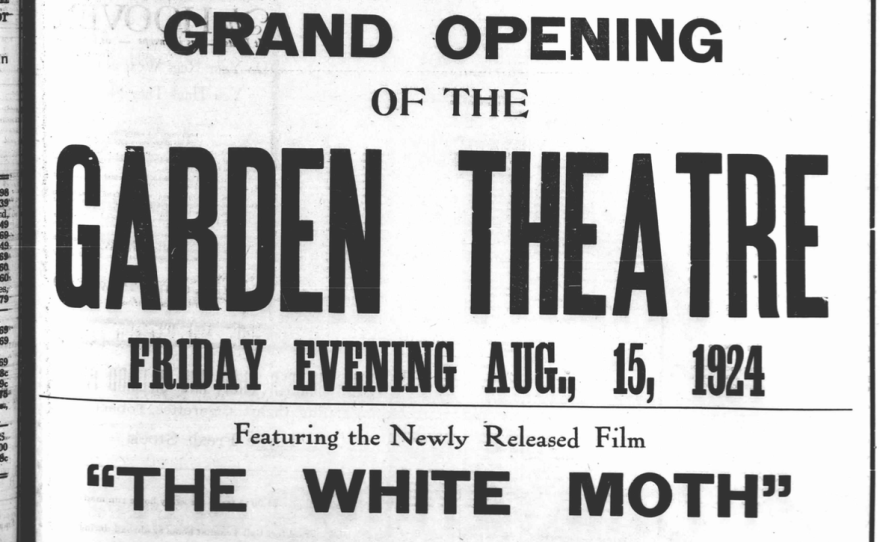Editor's note: This story was produced for the ear and designed to be heard. If you're able, WCMU encourages you to listen to the audio above. This transcript has been lightly edited for clarity.
When you imagine a movie theater, you may think of a dark room with red, velvety seats and black curtains.
But the walls of the Garden Theater in downtown Frankfort are bright yellow, and they’re accentuated by geometric patterns and bold primary colors.
The theater’s Art Deco style is reminiscent of the roaring 20s when Charlie Chaplin was gracing the black-and-white screen and “moving pictures” were all the rage.
Rick Schmitt is the board president with the nonprofit, the Friends of the Garden Theater, which now owns the property. He describes the theater as a "special place" that has been operating as a theater since it first opened on Aug. 15, 1924.
“(We hear) so many stories from folks that say they met their wife here, might have had their first date, got their first kiss on the cheek in the seats or they held hands," Schmitt said. "Those kinds of stories give you really great pride for what we’ve done to save the theater.”
Schmitt said 15 years ago, the theater was in poor shape and nearly sold and torn down in favor of condos.
Years of rallying, fundraising and restoration have brought new life into the Garden. The latest change involves the installation of 120 solar panels that now meet almost all of the theater’s energy needs.
"We call it a 'solar garden' at the Garden, and it's a 58,000 kilowatt system that essentially offsets our electric use for the year," Schmitt said. "Last year, we did 59,000 kWh. So it's just a win-win for everybody."
Switching to solar was a goal several years ago, Schmitt said, but when surveying the roof for the project, he learned it was on the brink of collapse — just one bad snow storm away from caving in.
The community raised $2.3 million dollars to fix the roof and address other code issues. The panels cost another $175,000, and the theater finally flipped the switch on solar last month.
“Phase one of the restoration was saving the building and bringing it up to code," Schmitt said. "Phase two was to turn it into the Performing Arts Center that it is today and phase three was to install some solar. And we did it.”
Up on the theater’s restored roof, the view of Lake Michigan and Bestie Lake is blindingly bright. The silent army of panels is tucked away, out of sight from the street below. The AC unit, now powered by the sun, hums softly.
“There's a lot of empty roofs that could be doing good things and making some Pure Michigan, clean electricity as I like to call it,” Schmitt said.
Excess energy generated by the panels goes directly into the grid. Schmitt said an old building will always need some TLC or a “tender loving capital-campaign.”
But he said the Garden is now in good standing to stick around for another century.
“People need a place to be together, and theaters provide that space," Schmitt said. "It’s important to recognize, as humans, we need to be with other humans. We’ve saved it once, and now we’ve saved it for the next hundred years.”
The Garden recently screened the silent drama film, the White Moth, which was the first movie shown when the theater opened. A live musical performance by Grammy Award winner Andrew Dost, Tim Jones and Aaron Dye accompanied the screening.
The theater will celebrate its centennial birthday with a 1920s themed party 7-10 p.m. on Friday, Aug. 16.





















